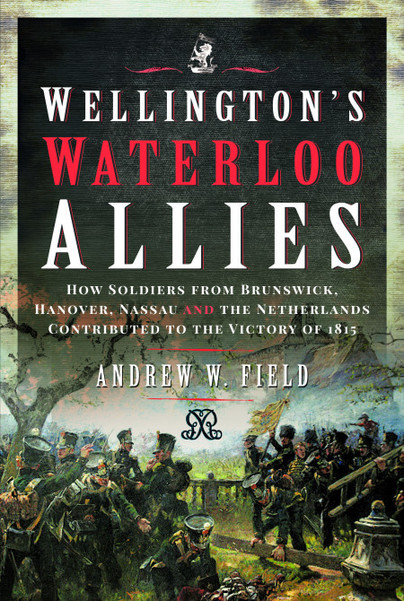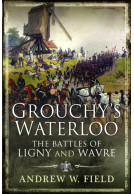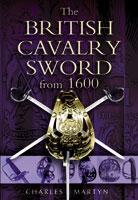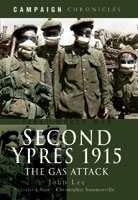Wellington's Waterloo Allies (Hardback)
How Soldiers from Brunswick, Hanover, Nassau and the Netherlands Contributed to the Victory of 1815
Imprint: Pen & Sword Military
Pages: 296
Illustrations: Integrated maps
ISBN: 9781399090377
Published: 1st April 2022
(click here for international delivery rates)
Need a currency converter? Check XE.com for live rates
| Other formats available - Buy the Hardback and get the eBook for £1.99! | Price |
|---|---|
| Wellington's Waterloo Allies ePub (4.6 MB) Add to Basket | £6.99 |
For almost 200 years, the British perception of the Battle of Waterloo was that it was a great British victory gained over the French tyrant Napoleon which was achieved in spite of, rather than because of, the allied contingents in the Duke of Wellington’s army. Eyewitness accounts by British soldiers, encouraged by the doubts expressed in Wellington’s despatches, denigrated and vilified the courage and prowess of these allies.
But in the last twenty years modern historians, with better access to the accounts and archives of the allied nations, have tried to put the record straight, and their efforts have been rewarded by changing attitudes and a greater understanding of the significant part the allies played. Andrew Field, in this the latest of his series of pioneering books on Waterloo, makes a powerful contribution to this continuing debate by analyzing in forensic detail the records of these allied forces throughout the campaign.
In his balanced, nonpartisan reassessment he describes the make-up of these forces, their training and experience, and their military capability. Included are graphic accounts of their actions and performance on the battlefield. His work is essential reading for all students of the Waterloo campaign.
As the author of this work points out, the last few decades have seen an increasing number of non-English accounts of the Waterloo campaign become available in English, thanks in particular to the work of Gareth Glover with his Waterloo Archive series but also through the efforts of scholars such as Erwin Muilwijk and Pierre de Wit. What Andrew Field sets out to do here is to provide a synthesis and analysis of these accounts of the four allied contingents – Brunswick, Hanover, Nassau and the Netherlands – within Wellington’s Anglo-Allied army.
Andrew Bamford May 2022. The Napoleon Series
In his introductory Chapter 1 entitled Military Effectiveness, Field sets out a series of criteria for assessing the various national contingents, addressing the primary ‘building blocks’ of manpower, organisation, equipment and arms, logistics, drill and training, leadership, discipline, ethos, support for the cause, experience, and courage and morale. He then makes some excellent points on potential pitfalls in the assessment of battlefield performance, noting in particular the danger inherent in making unqualified judgements based on casualty figures alone – particularly when the nebulous term ‘missing’ forms part of the equation – and discussing the issue of judging the value of inexperienced troops on limited evidence. This chapter concludes with a discussion of the ways in which Wellington sought to address these issues himself in the assembly of his army by breaking up national contingents and attempting to integrate them into British formations. Only with the Hanoverians was he able to achieve much progress in this regard but, as Field points out repeatedly in the remainder of the book, there is a strong argument for Wellington in his battlefield deployments successfully doing in practice what he was unable to achieve within the army’s on-paper order of battle – for example, breaking up the 2nd Netherlands Division at Waterloo into three portions, and depriving the Prince of Orange of effective command of his corps while retaining his utility as a figurehead and rallying point for troops of all nations.
We then move on to the four core chapters of the book, one for each of the contingents, which provide a structure somewhat reminiscent of John Gill’s treatment of Napoleon’s German allies of 1809, With Eagles to Glory. Much as with that work, we are introduced in each chapter to the background of the relevant contingent, the organisation of its forces, and the key command figures. This is then followed by a narrative account of the actions in which that contingent was involved, covering the fighting at Quatre Bras for those elements that were engaged there and culminating with its participation at Waterloo. In none of the chapters is there any treatment of the campaign post 18 June.
There is a lot of good and interesting material in here. This reviewer was particularly taken with the very good account of the activities of the 4th and 5th Hanoverian Brigades at Waterloo, including the unusual formation that they adopted in the early phase of the fighting, and their varied fortunes in the events leading up to the crisis of the battle. Likewise interesting and well brought-out in the introduction of the various commanders was the surprisingly large number of officers who had managed to sit out the bulk of the Napoleonic Wars completely once their home nations had been overrun, only to return to service in 1813-1815 in senior roles; this applies in particular to the contingents of Hanover and the Netherlands and is demonstrated to have had some unfortunate results on the battlefield. Conversely, the Netherlands Cavalry Division is shown to have contained a concentration of officers with experience of regimental and brigade command under Napoleon which enabled it to perform to good effect even after suffering considerable losses.
However, there is also a fair amount of repetition. To some extent this is inevitable when multiple national contingents took part in the same events, made worse by the fact that the Nassau troops attached to the 2nd Netherlands Division are discussed in Chapter 2 along with their own national contingent, which means that some of the same ground needs to be covered again when the activities of the rest of that division are discussed in Chapter 5. Perhaps less excusable is the fact that the same quotations appear on multiple occasions within the work; a complaint by the Hanoverian Captain Jacobi about the breakup of the Hanoverian divisions and their distribution by brigades amongst the British divisions appears on page 19 and then again on page 102, for example, albeit at greater length on the second occasion.
The other weakness of this section, which is unfortunate in the context of the author’s self-defined terms of reference for assessing the contribution of the various contingents by means of what they achieved against what potential they had, is the treatment of the raising and prior experience of the contingents. This is particularly marked in the case of Hanover where the service of that part of the contingent that took an active part in the campaigns of 1813 and 1814 is treated in a fairly cursory fashion which leads to generalisations about inexperience that do not entirely fit with the past records of the regular Hanoverian battalions. A more rounded picture of both the Hanoverian and Netherlands contingents would also have been possible had the author chosen to consider that portion of the army that was not engaged at Quatre Bras and Waterloo, but there is no treatment at all of the troops left at Hal under Prince Frederik and Lieutenant General Colville, nor of the four brigades of the Hanoverian Reserve Corps. Consideration of these troops would not only have helped complete the picture of the two contingents concerned – it would have been interesting to have it demonstrated, for example, whether there were any appreciable differences in perceived or actual quality and reliability between the troops actively engaged and the troops left to cover the open right flank – but also would have facilitated the author’s analysis of the troops that form the core of his study. Field speculates on pages 101-102 about why the Hanoverian brigades were not organised with a mixture of regular and landwehr battalions, apparently without recognising that the 6th Hanoverian Brigade, with Colville at Hal, was organised on just such an establishment.
The sixth and final chapter of the book proper, entitled Summary and Conclusions, is brief and restricts itself to general points; there is no obvious attempt to apply the analytical structure outlined in Chapter 1 to the individual contingents, or to draw comparisons between them, and the discussion relates to Wellington’s use of allied troops in general terms. Comparisons with the British troops are made without any attempt to acknowledge the widely varying levels of experience within that portion of the army.
This chapter is followed by five appendices. Three of them deal with matters peculiar to the Hanoverian contingent, and it is not immediately clear why they were not incorporated into Chapter 4; likewise, the fourth relates to suspicions of the Belgian troops and might usefully have been included in Chapter 5. The material is all interesting and useful but revisiting these topics at the end of the book requires more repetition. The last appendix, however, merges material from the four contingent-specific chapters to assess the role of the allied forces in the defeat of the Imperial Guard. There are some interesting conclusions here, including a greater role for elements of the Hanoverian landwehr, and, conversely, a downplaying of the importance of the significance attack launched by Detmers’ brigade of Chasse’s 3rd Netherlands Division. It would have been interesting, however, if this discussion had been grounded in the recent secondary literature on this topic as well as in the primary source accounts.
Had the author declared his intentions at the outset as being to write a narrative account of the non-British contingents of Wellington’s army, this reviewer would have found little to fault with it. The narrative that we do get is interesting and lively and makes a number of useful points on specific issues that make one think again about various aspects of the fighting on 16 and 18 June. For this reason, the title is certainly a worthwhile addition to a Waterloo-scholar’s library. However, if one is going to promise analysis as well as narrative, and present a theoretical framework on which that analysis is to be hung, then one is under a certain obligation to deliver that analysis, and in that regard, it is impossible to finish the book without feeling just a little bit short-changed.
I'm not a Waterloo expert but I suspect that if I read more of Andrew Field's books I could soon become one. This latest volume details the contribution of foreign troops to Wellignton's 1815 success, specifically soldiers from Brunswick, Nassau and the Netherlands.
Amazon Customer, Paul Nixon
There is a good index, a strong bibliography, five appendices and extensive notes. Tables and maps also help to make sense of the battle and the contributions made by foreign troops. A useful study produced to Pen & Sword's usual high standards.
5 out of 5
For wargamers feeling a bit jaded with Waterloo, this is a boon because we can now fight those parts of the battle where the Allies seized their opportunity to turn back the French. That sounds like an interesting challenge.
Wargames Illustrated April 2022
Here we have a different view of the Waterloo campaign which calls into question many aspects of some previous Anglo-centric views of the battles. Using the national archives of the various nations new light has been shone on the battles at Quatre Bras and Waterloo. This corrective is useful in so much as no one saw the whole battle, every soldier, if their voice could be heard, would give a different view and that also would change as time passed, this is another view.
Clash of Steel
This book is a strong reinforcement to more recent thinking about the contribution of the non-British troops to the eventual victory. What is special and particularly valuable is an army officer’s analysis of all aspects e.g. training, equipping etc., of the various national contingents. Understanding of which goes a long way into understanding the actions of the various national contingents. This is incidentally an interesting insight into how different nations organized their army's in the Napoleonic period.
The text is well supported by maps and charts and makes clear as possible the confusion of the battle fields.
A good read which we highly recommend.
Read the full review here
It seems that Waterloo was won not just by the British but by a conglomeration of forces from Brunswick, Hanover and the Dutch... Comparatively modern historical records are set straight in this amazing book.
Books Monthly
I would honestly recommend this worthwhile volume to all students of the Napoleonic campaigns and also those specifically interested in the Waterloo campaign. It is also a book that should be added to the "essential reading" lists for anyone interested in 19th century history.
Arrse
Read the full review here
The Duke of Wellington complained that he commanded “an infamous army”: a mixture of British and contingents of foreign troops, some of whom had previously served in Napoleon’s armies, whose loyalty might be questionable (one had only to remember the example of the troops of the French Royal Army led by Marshal Ney to arrest Bonaparte on his return to France), and many of whom were young, or newly raised and inexperienced. He did not expect too much of some of the foreign units and so deliberately either flanked them with British or King’s German Legion troops or placed them in his second line or reserve.
Arthur Harman
“British triumphalism and jingoism” created a perception that the Battle of Waterloo was won “in spite of, rather than because of, the contribution of the allied contingents in Wellington’s army.” In this book Andrew Field offers “an in-depth and objective analysis of the potential and battlefield performance of the allied contingents.”
The author has not included the King’s German Legion (KGL) in this study as, despite being Hanoverian, it was a formal part of the British Army and was considered to be “every bit as professional and effective as their British comrades, indeed more so in some areas” after its long service in the Peninsular War. Nor has he included the Prussian Army as there are detailed studies of its contribution to the campaign.
Instead, he has focussed upon the Nassau, Brunswick, Hanoverian and Netherlands contingents in turn, to consider their manpower; organisation; equipment and arms; logistics; drill and training; leadership; discipline; ethos; support for the cause; experience, courage and to try to measure their potential military effectiveness, and then balance it, “with all the benefits of hindsight, with what they actually achieved on the battlefield to analyse to what extent this potential was realised given the individual circumstances each unit or contingent operated in and faced.”
Appendices cover the following topics: Von Vincke’s Square; The Retirement of the Hildesheim and Peine Landwehr Battalions; The Actions of the Duke of Cumberland Hussars; Allied Suspicions of the Belgians, and The Allied Contribution to the Repulse of the Imperial Guard.
Twenty maps showing appropriate areas and events of the battle and five deployment diagrams accompany the discussion of the different national contingents. There are no other illustrations; reproductions of paintings and prints of Waterloo that would be familiar to any reader with a serious interest in the campaign would be superfluous.
Twelve pages of endnotes, a three-page bibliography and an index conclude the book.
As a one-volume analysis of the part played by the troops of nations other than British in the Allied Army in the campaign and battle of Waterloo, this book is an excellent corrective to the many Anglocentric accounts and interpretations of the Hundred Days that have been published in the past. The author acknowledges and discusses the evidential limitations of the many eyewitness accounts by the participants and explains his methodology for judging the performance of the Allied troops in detail.
I shall not summarise his conclusions in this review but found his analysis both objective and very convincing.
Readers who already possess and appreciate Andrew Fields’ previous books on Waterloo will definitely want to add this one, which deserves a place on any Napoleonic wargamer’s bookshelf, to their libraries.
I’m a big fan of Andrew Field’s contributions to Napoleonic historiography. I use that latter word quite specifically, because Field very deliberately analyses not just the events related, but how our readings of these events come down to us.
Sebastian Palmer
I may be be mistaken, but I think I’ve read all of his major Waterloo works? I’ve certainly thoroughly enjoyed them all. Well written and admirably balanced, Field’s books have brought a much broader understanding of events around and including Waterloo to this reader.
This latest book takes a systematic look at the contributions of Wellington’s Allied troops. Not Blücher’s Prussians, but the ‘bouillabaisse’ of foreign contingents under his own command: Hanoverians, Brunswickers, Dutch, Belgians and Nassauers.
The opening chapter, ‘Military Effectiveness’, sets out what it is Field intends to examine. Having established how one might judge military effectiveness, he then takes each contingent in turn, from the small working up to the large: Nassau; Brunswick; Hanover; the Netherlands (Dutch/Belgian). Finally he summarises and concludes.
But there are also five appendices, covering various topics related to Allied contributions to Waterloo. From the infamous disappearance of the Cumberland Hussars, to why the Belgians in particular were thought unreliable.
Taking each contingent in turn, at Quatre Bras and Waterloo, involves inevitable repetition, albeit from continuously shifting viewpoints. Whilst this might initially seem clunky I think it’s the only sensible way to present the material.
Had Field attempted to hop from one national contingent to another in order to preserve a singular timeline, an already potentially very confusing subject would’ve been rendered impossibly opaque. As it is the level of detail makes this very much a book for the dedicated Waterloo buff.
In our native Anglo-centric tradition works of this sort are a most welcome and shockingly belated corrective to a narrative that’s been allowed to atrophy into a very distorted jingoistic national myth. I welcome this much more realistic balanced appraisal.
As Field notes, Wellington himself wasn’t keen to delve into the messy search for historical truth. Understandably so; he had military and political reasons for not being concerned with such details.
But both historians, and we interested readers of history, ought, I think, to approach the subject more openly, and with the kind of fair-minded clarity Field always brings to his works.
I loved this.
Two quotes from Field’s concluding comments capture both why such a study is so worthwhile, and what it ultimately teaches us:
‘[T]o judge an army without taking into account the circumstances in which it was raised and prepared will teach us nothing.’ (p. 217)
‘Wellington could not have defeated Napoleon without them and each in their own way made a vital contribution to the victory.’ (p. 220)
An excellent book. Highly recommended.
This book maintains the author’s high standards in delivering a well researched and balanced view of the contribution of the allied troops at Waterloo. His approach in dealing with each contingent separately works well and the sketch maps indicating the positions occupied in the field are invaluable. The detail of the narrative certainly offered me some useful insights into the contribution of the allies and the book is an essential component in adding value to any Waterloo bookshelf.
Michael McCarthy
Michael McCarthy. Battlefield Guide
About Andrew W Field
Andrew Field MBE is a former British army officer whose travels around the world have given him a unique opportunity to explore battlefields from ancient history to present times. He has always harboured a special fascination for the Napoleonic Wars. In particular he has reassessed Napoleon's campaigns in 1814 and 1815, and has carried out extensive research into Wellington's battles in the Peninsula. His books include Talavera: Wellington's First Victory in Spain, Waterloo: The French Perspective, Prelude to Waterloo: Quatre Bras, Grouchy's Waterloo: The Battles of Ligny and Wavre, Waterloo: Rout and Retreat and, in two volumes, The French at Waterloo: Eyewitness Accounts.




















